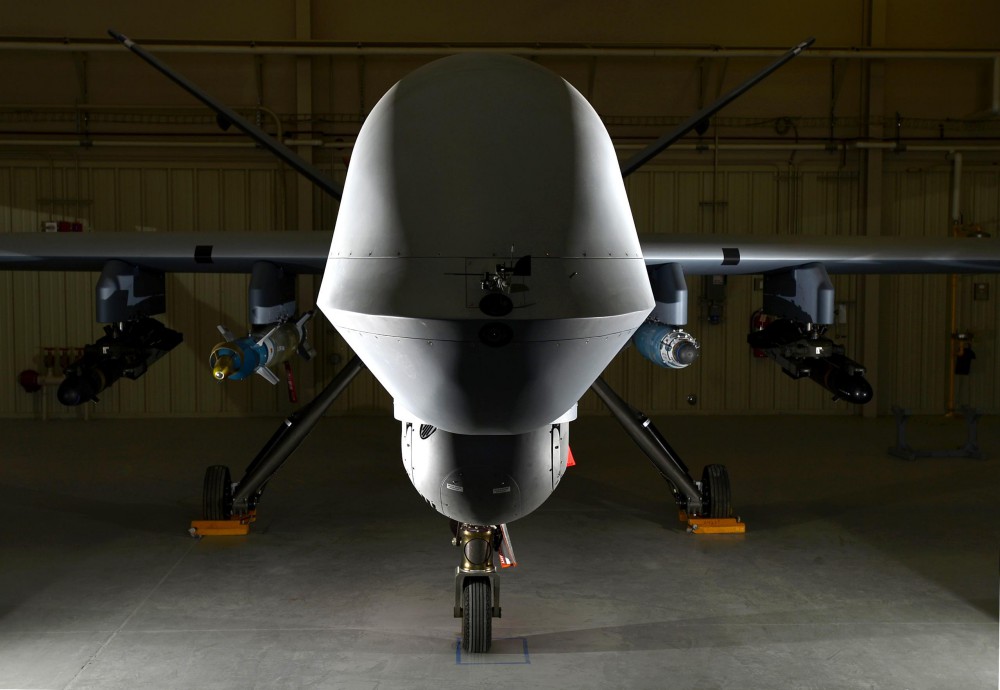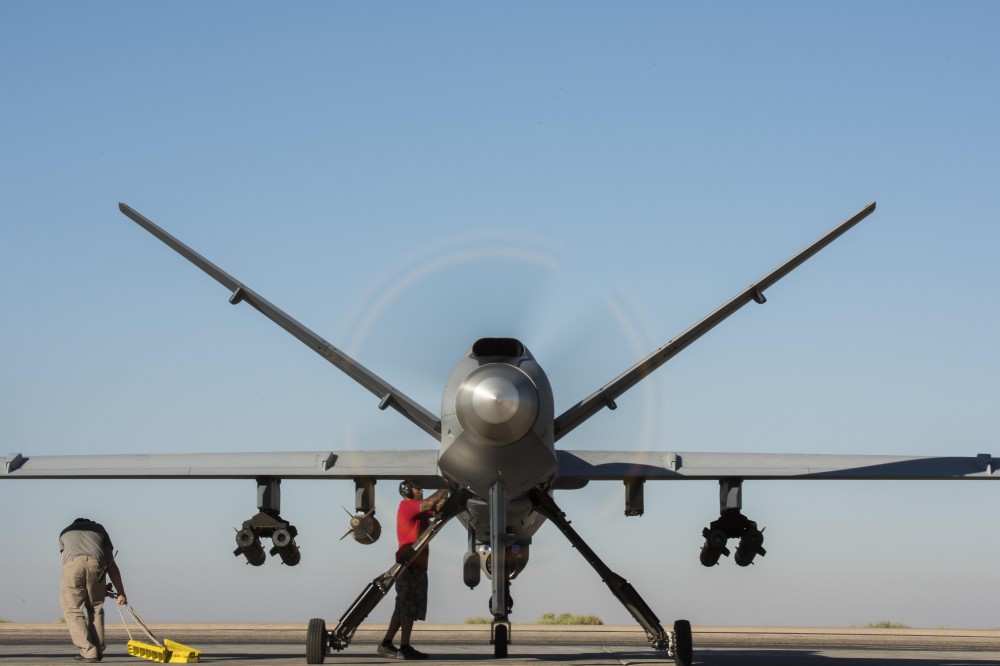
The new Block 5 MQ-9 Reaper is loaded with AGM-114 Hellfire missiles, a GBU-12 Paveway II laser-guided bomb and a GBU-38 Joint Direct Attack Munition April 13, 2017, at Creech Air Force Base, Nev. On June 23, 2017
The 386th Air Expeditionary Wing successfully completed its first combat mission with the latest version of the MQ-9 Reaper in support of Operation Inherent Resolve.
The wing’s remotely piloted aircraft unit, the 46th Expeditionary Attack Squadron, transitioned its attack and reconnaissance airframes from the MQ-1B Predator to the Block 5 MQ-9A Reaper.
“The persistent attack and reconnaissance the RPAs bring to the fight is extremely important to Operation Inherent Resolve,” said Capt. Jason, the 46th EATKS commander. “RPAs are used to develop targets, find and track high value individuals, protect friendly forces and complete the mission of finding, fixing, tracking, targeting, engaging and assessing.”
The MQ-9A Reaper, Block 5 variant, is a larger and more powerful RPA than the 386th AEW’s previous airframe, the MQ-1B Predator.
It can fly higher and faster than its predecessor, as well as, carry more ordnance, said Jason.
The MQ-9 can carry four Hellfire missiles and 500-pound bombs, whereas the MQ-1 could only carry two Hellfire missiles.
The MQ-9’s ability to employ laser-guided air-to-ground missiles provides highly accurate, low-collateral damage, anti-armour and anti-personnel engagement capabilities.

Maintainers perform final preflight procedures prior to a MQ-9 Reaper, Block 5 variant, taking off June 23, 2017, in Southwest Asia.
The remotely piloted aircraft is controlled through remote split operations. In theater, the 46th EATKS provides launch-and-recovery ground control for takeoffs and landings. A separate aircrew based in the continental U.S. then executes command and control of the remainder of the mission via satellite links.
“We do a crew brief and aircraft pre-flight just like any U.S. Air Force aircraft,” said Jason. “We then establish a line-of-sight link with the aircraft to start engines, conduct ground operations, taxi and takeoff.”
After the aircraft has climbed to a certain altitude the crew on the ground enables the satellite control system and then hands the aircraft off to a crew in the states that flies the mission before returning it to the 46th EATKS to land.
The 46th EATKS is composed of pilots and sensor operators who operate the aircraft, a team of maintenance personnel who maintain the aircraft and ground control stations and a squadron aviation resource manager to ensure flying records are in order.
“Our ‘why’ is to prevent additional terrorist attacks; protect coalition forces, our families and our way of life; and annihilate ISIS,” said Jason. “That’s why we do what we do every day, whether deployed or flying combat missions from CONUS. It takes a team for us to succeed, from aircrew, maintenance, operations support and a multitude of units across the wing.”
Source: US Air Force

The term used “RPAs are used to develop targets” should be changed. The targets are allready there! You can evaluate them and decide what to do to/with the target!